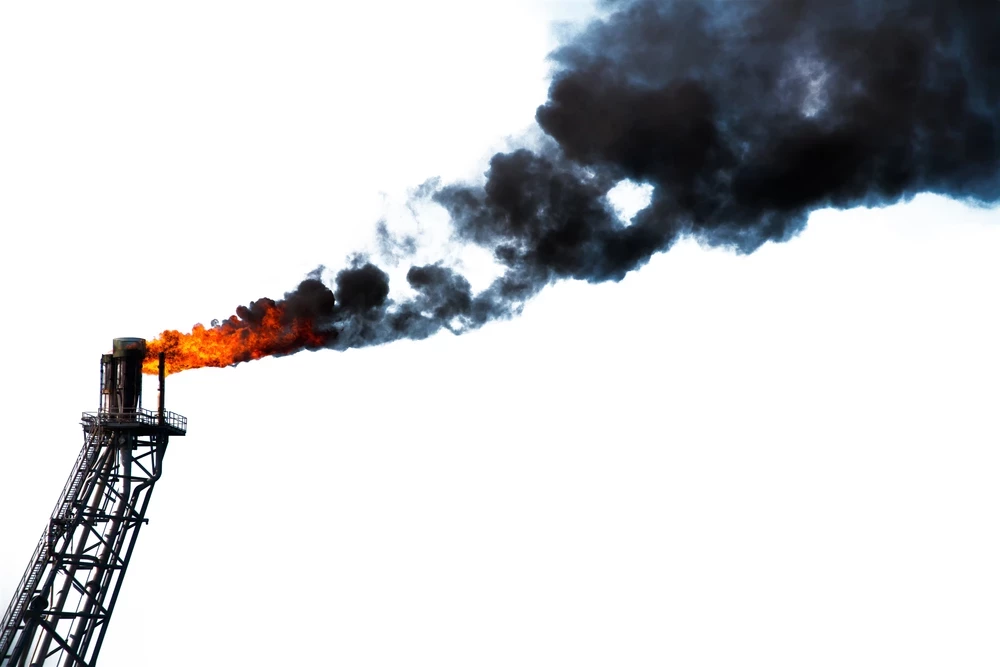Taking on the rough LNG bunkering challenges
With Coriolis flow technology
Add bookmarkSulphurs, scrubbers, and safety: liquefied natural gas
The marine industry has seen its clean future in alternative fuel types. As fuel related costs represent a significant part of a ship’s budget, low sulphur fuels will be too expensive and likewise scrubbers can be an expensive solution. Adding to the challenges, there is neither an organized structure for disposal of the filtered sulphur, nor can it be dumped in the ocean. LNG on the other hand, is a safe fuel as it returns to its natural form (gas) once in contact with air and in case of leakage it will cause no damage to the environment.
You might be interested in our complete guide to fracking.
To make LNG fuel a reality, engine manufacturers have developed new engines for dual fuel propulsion, and several shipping companies have already adopted dual fuel propulsion technology for their newbuild projects. With the introduction of dual fuel engines LNG bunkering is gaining acceptance correspondingly. Significant global interest in developing and investing in LNG bunkering solutions along with the adoption of LNG as a fuel in general, indicates a new future direction for the marine industry.
Coriolis measurement advantages over older technologies for LNG
Though differential pressure meters and turbine meters are the oldest and most well-established methods for metering solutions for custody transfer applications, they are often not suitable for evolving measurement needs of LNG. Some of the challenges include significant pressure drop in the flow line, limited flow range, and requirements of long, straight runs of pipe upstream and downstream. However, the variable composition of LNG remains the biggest challenge for these methods, as it is not possible to assign default properties at the reference conditions (i.e. boiling point) to convert between volume and mass as is commonly done with purity cryogenic liquids.
Volumetric methods of measurement involve density and temperature correction, and the readings are subsequently converted to mass before energy content calculation. Converting the volume into mass involves significant errors due to number of steps involved and change in volume measurement with change in temperature and density.
Ultrasonic meters and Coriolis flow meters are the two ‘newcomer’ technologies, and these methods have already caught the attention of an industry in need of greater accuracy and flexibility.
Taking a closer look at the relatively new Coriolis metering reveals a technology that presents several distinct benefits over other measurement options.
While ultrasonic has been widely accepted for use in metering natural gas, they are still in the initial stages of demonstrating good measurement of LNG, compared to the Coriolis meters, which already have well-established success in measuring both gaseous-phase natural gas and LNG. Adding to this Coriolis technology addresses many of the limitations of the alternative technologies as it has no moving parts and no wetted dynamic components.
Direct mass flow and density measurement
Coriolis quantity measurements are unaffected by changing fluid properties such as viscosity, density, temperature, or pressure. This means, that when the flow rate measurement is made in direct mass units, the delivered quantifying net energy content is reduced significantly.
Traditional volumetric meters require either pure fluids or density-compensation correction systems to adjust the actual measured volume flows to reference conditions – a conversion that increases uncertainty of the measurements. By measuring mass directly Coriolis meters eliminate the extra complication and save costs as there is no need for density compensation.
You might be interested in our piece on the make-up of LNG.
Reducing the conversions and compensations for flow measurement reduces the risk of errors and variabilities. The direct mass-flow measurement of the Coriolis meter is a more straightforward way to calculate energy content and ultimately boost measurement confidence.
No special piping requirements
Coriolis meters do not require special installation procedures, flow straighteners, or specific lengths of straight pipe for correcting the fluid flow profile. These excessive accessory requirements that used to overcome the limitations of turbine, ultrasonic, and differential pressure systems are costly and cumbersome. By eliminating the external piping requirements, the costs and size of skid-based measurement systems are reduced. Instead, Coriolis meters enable a simple, cost-effective loading terminal design.
No calibration drift
Coriolis meters do not experience a drift in performance or calibration over time when operating on LNG unlike other technologies. Coriolis meters hold their calibration for years at a time without demanding maintenance and as there are no intrusive moving parts there is nothing that can be worn out or be sensitive to changing fluid composition.
Source: Marc Buttler – Director Oil and Gas Application Innovation, Emerson.
Transparent, traceable and certified fuel bunkering solution
However, the atmospheric pressure and density of LNG makes it challenging to measure and handle. Also solutions require an MID type approval. Due to inherent cryogenic properties of LNG, equipment involved in transferring and measuring need to be cater for the cryogenic conditions of LNG. This also impacts the commercial aspects of the infrastructure, making it more expensive compared to that of traditional fuel.
You might be interested in our guide to FLNG.
LNG mainly consists of methane and nitrogen with a small concentration of other gasses such as butane, ethane, propane and pentane. The mixture proportion can vary as there are currently no international quality standards for fuel based LNG, which also means that the energy content can vary. There are however, regulations regarding LNG bunkering measurements which companies and equipment must comply with.
Because of the differing energy content level, LNG custody transfer is carried out in million British Thermal Units (MM BTU), which is defined as energy content in the fuel. In an LNG bunkering buyers and suppliers measure the energy content which has been transferred. This involves measuring the quantity in mass (or converted to mass if volume is measured) and measuring the Gross Calorific Value (GCV) of the fuel.
It is vital to measure the mass directly, as the Coriolis mass flow meters, both to eliminate the tedious conversion process but also to obtain an accurate LNG bunkering. Mass can be directly used for MM BTU calculation, adding more certainty to the measurement.
Combined with a gas chromatograph (GC) the GCV can be measured, which can be subsequently used to calculate MM BTU of a transfer. Additionally, GC can help to derive the composition of the LNG which is important to prevent knocking of the engines.
Emerson holds the MID type approval T11158 for LNG bunkering systems and is currently the only company providing an MID approved solution. Though there are volumetric flow technologies that meet the same standards, the solutions are either too small, are difficult to adopt in a bunkering system or have trouble handling the varying temperatures of LNG, as its extreme low temperature and density are very difficult to measure. Emerson’s type approved LNG bunkering system allows the highest measuring accuracy on LNG in mass, density and volume within the regulations of MID and OIML thanks to the unique and patented design and geometry.
Emerson has measured LNG effortlessly for years
LNG measurement is not new to Emerson and apart from providing systems for LNG custody transfer, Emerson also covers other LNG measurement applications.
Emerson Coriolis Mass Flow Meters are already being used for Boil Off Gas (BOG) and Emerson has a big installed base and knowhow regarding challenges in LNG custody transfer applications.
As a newcomer to the LNG fuel application the marine industry is now moving towards adoption of Marine Engine Gas Injection (MEGI) for propulsion, which is more efficient and emits lower emissions than traditional Diesel Electric engines, MEGI requires BOG being injected at a pressure as high as 350barg depending on the engine type. Emerson’s high-pressure meter not only brings the inherent Coriolis technology benefits but also meets the stringent application requirements. Meters are rated for pressure rating of up to 431barg, which can cater for present and future MEGI requirements.
Seagas – the world’s first bunker fuelling vessel for LNG
Seagas is the world's first bunker fueling vessel for LNG belonging to AGA. It was put into operation in April 2013 and since then Seagas completed nearly 1500 LNG bunkering operations for the cruise ship M/S Viking Grace. Seagas transfers 60 tons of LNG for each bunkering operation carried out in Stadsgården, Sweden and involves an actual transfer time of only 35mins.
[inlinead]
For the LNG quantity measurement, Seagas is using Emerson LNG fuel bunkering solution with Micro Motion Coriolis Mass Flow meter, which in turn is connected to a PLC system onboard showing mass flow rate and mass totals Mass flow meter reading was initially tested by renting a big scale where truck weight was compared with mass flow meter reading and accuracy was below 0.5 %. The past 5 years of smooth operation has increased the fuel seller’s and fuel buyer’s trust in the system and the LNG measurement.
Partner up with an experienced global organization capable of delivering the required knowhow and services when and where needed. Emerson not only provides a vast marine system and product platform catered to vessel needs but also offers service, projects and spares support globally to ensure smooth sailing of the vessels.
Written by Mark Spee, Product Manager and Naveen Hegde, Business Development Manager, Marine Solution, Emerson.















